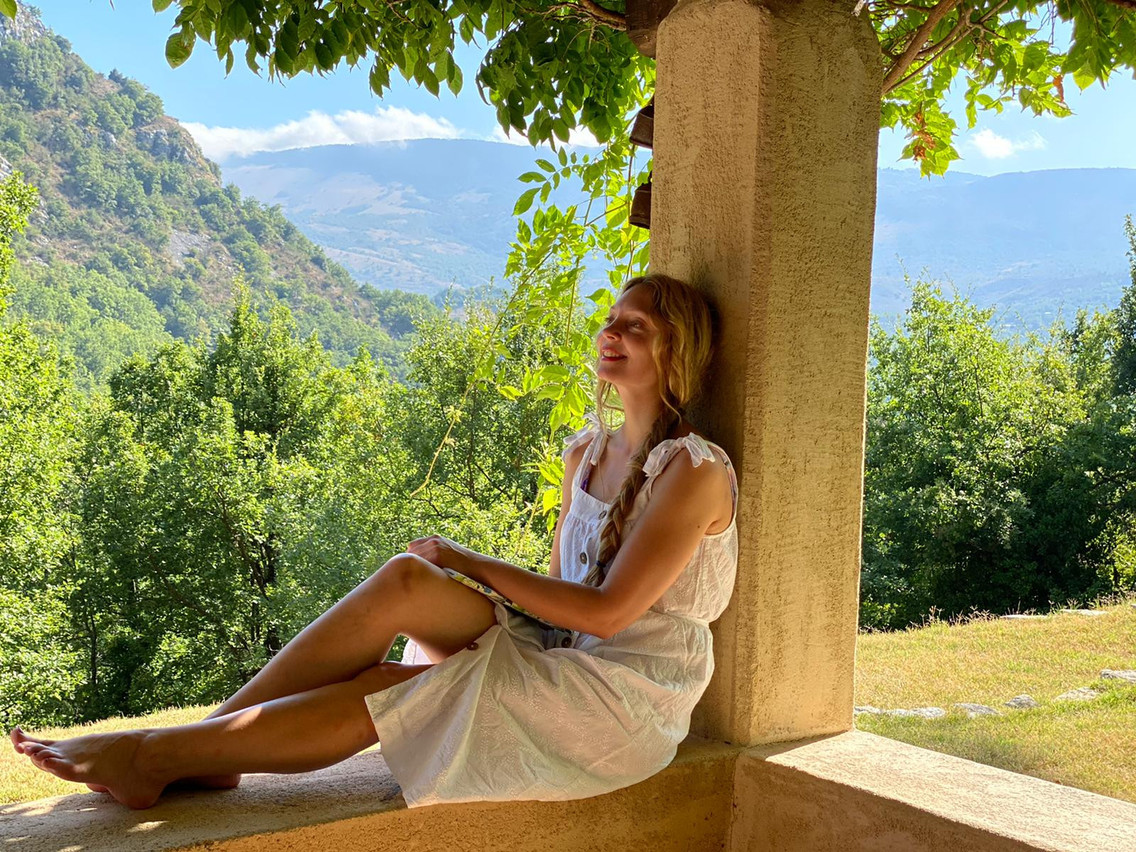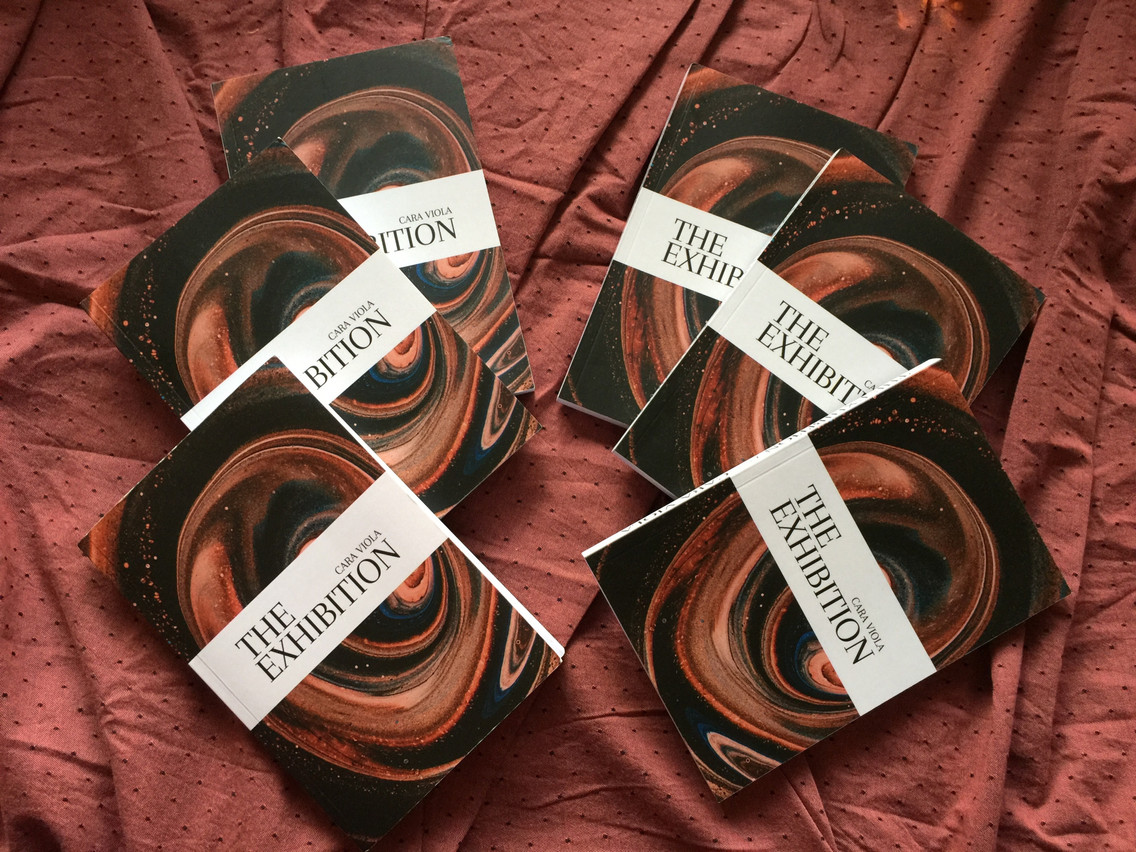The Exhibition is historical fiction, set in Scotland at the turn of the 20th century. Its protagonist, Madeleine Yare, has come to Glasgow for a woodworking position as part of the 1901 International Exhibition. “When she starts her job,” explains Bland, “she discovers some things that aren’t quite right, that aren’t quite as they seem… possibly, she has been hired for a different reason altogether.”
This sets the stage for the novel’s action, in which these mysteries are gradually grown and unravelled. Compounding the tension in the plot, however, is Bland’s narrative style, which remains heavily focused on Madeleine. Every detail and action is rendered via her observation of it, which creates the literary equivalent of a movie that utilises close-up shots of a character’s face and obstructs the wider--and more comforting--point of view.
For example, in a passage from the opening pages, the weather and city are not so much described as they are digested as sensations within Madeleine:
The rain came horizontally now, driving up her skirt and sending icy waves up her legs. When she reached the top of the hill, the coldness had turned into an illusion of warmth. She guessed the way and turned left, rounding the hill at its pinnacle. Now she saw more of Glasgow as it stretched beneath her, a massive canvas of brick and stone, lights twinkling in the dark.
Image as inspiration
The novel’s focal setting is Kelvingrove Museum, a real place from which the story grew organically: “I lived in Glasgow for several years,” explains Bland, “and I actually lived near Kelvingrove Museum and used to walk past and pop in sometimes. It’s a huge, impressive building, very gothic, very atmospheric. I really wanted to set a novel there.”
This explains the authenticity of the building’s descriptions in The Exhibition. It also explains the historical era the author chose, since the building really was built for the Glasgow International Exhibition in 1901.
With the setting and atmosphere swimming her head, Bland only needed a starting point for the story. Interestingly, when inspiration arrived it wasn’t complex or layered, but simple: “This image popped into my head of a young woman wielding a knife--Glasgow has had a reputation of being a city full of knife crime--but she is actually using it to make beautiful objects.” From there, she explains, it just grew.
Her room at Kelvingrove was not small—she could take three strides down one wall and four down the other—and it still looked more like its original function, the office of one of the many curators who would take up their employ once the building opened to the public. The furniture was scattered and looked out of place: a modest bed and her trunk. They had placed her work tools onto a bench pushed against the far wall. Such a strange arrangement, thought Madeleine not for the first time. To think, would he, whoever he was, have his desk where she slept? Stand where she dressed? Drink tea where she washed her face?
In this passage, we can further observe how Bland relishes her setting and her sense of image, both locationally and temporally. Madeleine settles into her room at Kelvingrove, but is already haunted by its future inhabitant--a faceless, nameless curator--who nevertheless, for readers, also exists in the past. These layers of time have a disorienting effect that, without resorting to plot or even dialogue, heightens the tension in the narrative.

Bland (pictured) started submitting the manuscript in 2017, but says she ought to have waited. “I think it’s a mistake that a lot of debut writers make: they send these things out too early. They think it’s ready… and it’s definitely not.” Photo: Cara Bland
The publishing process
When asked how many times the manuscript was rejected, Bland answers: “I honestly couldn’t tell you”. However, she doesn’t seem too scarred by the journey to publication, which started in 2017 and ended in November of 2021. “I didn’t send [the manuscript] out to hundreds of people at once,” she says. “I would send it out to, maybe, five places. And then if I got rejected from all of them, I’d go and work on it again.” Receiving positive feedback from a few publishers and agents here and there also kept her going.
“It’s so subjective, who wants to publish your work--you have to find the right place.”
The right place ended up being Greenteeth Press, an independent UK-based publisher that Bland found via Twitter. “There’s a really amazing community on Twitter of publishers in the UK,” she explains, “especially small, independent presses.” Greenteeth actually rejected the project she initially submitted to them, a novella, but inquired about the book-length manuscript she had mentioned on her website. That manuscript became The Exhibition.
Working with a small press, she reports, was a positive experience: “You don’t have the same reach, obviously, as with one of the big publishers, but you get to be more involved--you don’t have the feeling that your manuscript is suddenly taken out of your hands, that you have no control over it.”
And as Bland has crossed the finish line of publicationhood, she must be asked the inevitable question of her advice for aspiring writers. “Do whatever you think works for you,” she says. That extends to doing a creative writing degree or not, doing it on your own not. “If you want to be published, or to succeed… it’s just determination.”
About the author
A ghostwriter, editor and now novelist, Bland lived in Luxembourg for seven years before recently moving back to the Ruhr valley, Germany, where she grew up. Fittingly, she spent her time in the grand duchy in an old farmhouse in Bourglinster, which she describes as “very atmospheric” and “perfect for writing”. She has already begun work on her next novel, again historical fiction but set in Florence, Italy.
Find out more about The Exhibition, which is available as an e-book or at the , on or website.
